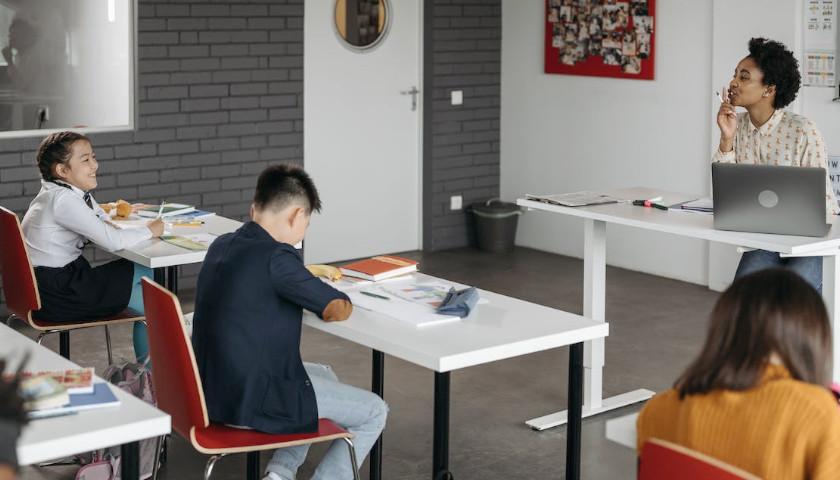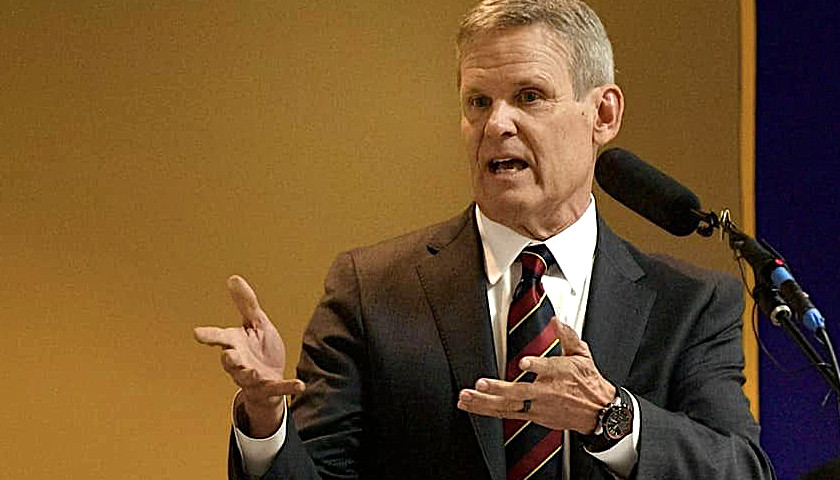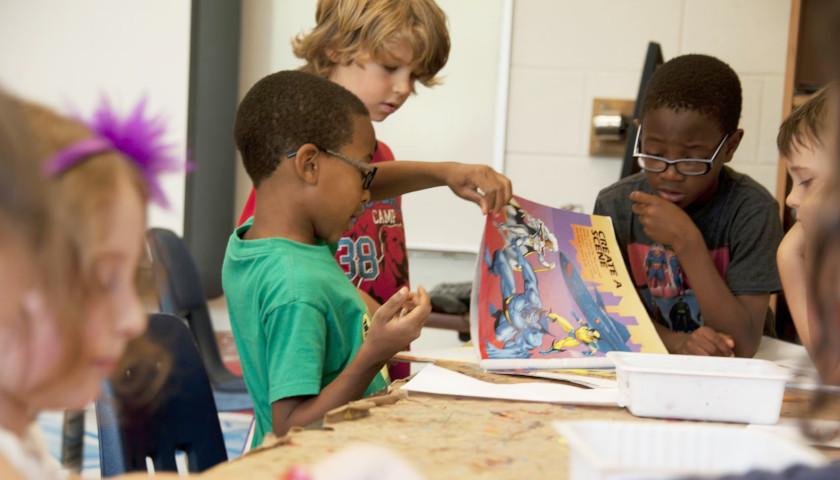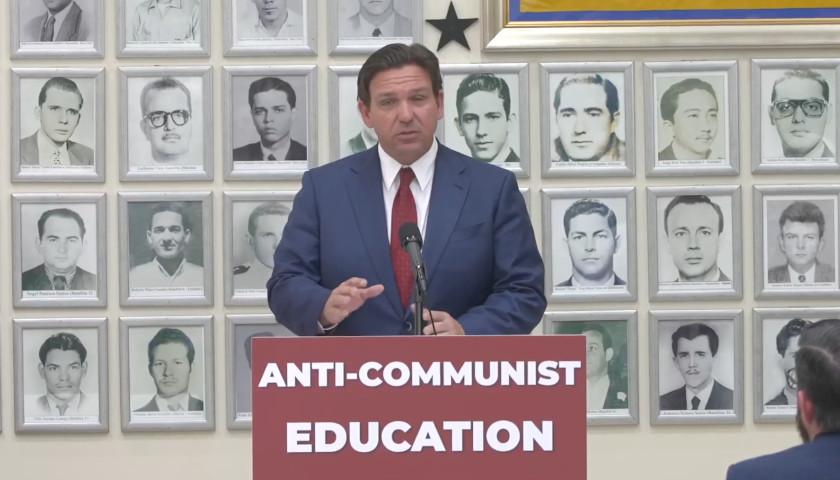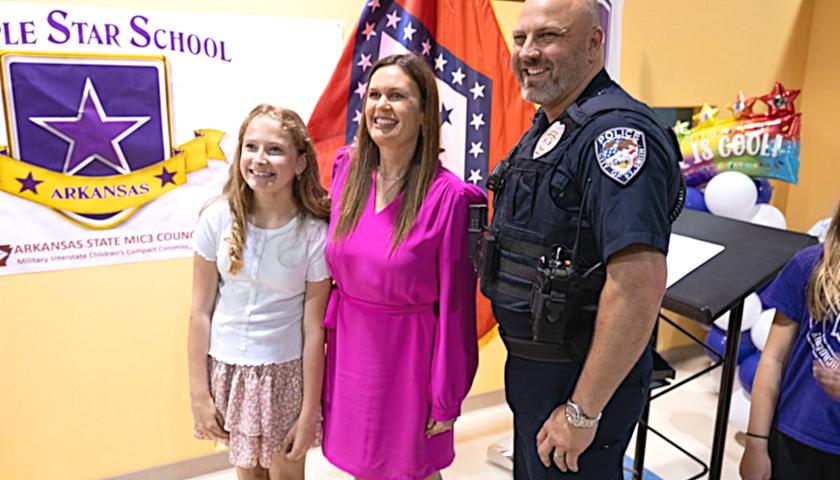by Vince Bielski
A growing number of states are adopting a comprehensive new type of school choice program that would pose a threat to public schools if many students were to leave them for a private education.
Eight states – including Arizona, Florida, Indiana, and West Virginia – have approved “universal” or near-universal school choice laws since 2021. They open the door completely to school choice by making all students, including those already in private schools and from wealthy families, eligible for about $7,000 to $10,000 in state funding each year for their education.
What’s more, most of these states have also enacted education savings accounts, or ESAs. They give families much more freedom than traditional tuition vouchers, depositing state funds into private accounts to spend on virtually anything related to learning, from homeschooling and online classes to therapy and supplies.
The universal laws amount to a bracing change in school choice. Such programs have existed for decades but until now have been limited to a narrow set of students, such as those from low-income families, or in poor performing public schools, or in need of special education.
By making all students eligible, regardless of their ability to pay for a private education, universal programs in the eight states expand the pool of possible participants by about 4 million students, according to an estimate by EdChoice, an advocacy group. That’s a 40% increase in eligibility since 2021, bringing the total to 13.6 million students after the programs start in the next few years.
School choice advocates – led by grassroots conservative Christian groups, big money political lobbies like American Federation for Children, and education nonprofits like EdChoice – call the universal programs a major milestone in their long and contentious battle for parental rights. They argue that parents, not the government, are best suited to direct the education of their children and should receive taxpayer support to do so as a competitive check on public schools they also pay for but consider failing or inadequate.
But over the years, school choice has suffered from a low participation rate, with fewer than 1 million students partaking in state programs today, mostly to attend religous schools, in a nation with about 50 million public school students. The big question is whether universal laws, paired with the flexibility of ESAs to customized learning, will spur a major exodus to private schooling.
“Universal choice is really a significant move beyond the existing programs we have now,” says Professor Patrick Wolf at the University of Arkansas, who has studied school choice for 25 years. “In terms of regulating education providers, this is a much stronger move into the free-market provision of K-12.”
Why Now?
This sudden success reflects both long-term trends and recent events. Americans’ satisfaction in public education has slowly eroded over the last two decades. And during the pandemic, student test scores in math and English plummeted as a result of ineffective remote learning, with satisfaction dropping sharply from a majority before COVID to a mere 42% last year, according to Gallup.
Advocates in Republican-controlled states seized the opportunity created by COVID, when teachers unions blocked the reopening of schools, spurring parents to search for educational options, including homeschooling, to keep their kids from falling behind.
“Parents saw there were many ways to educate kids,” says Robert Enlow, president of EdChoice. “It opened up a world of possibilities for them.”
At the same time, the spread of a woke curriculum following the police murder of George Floyd in 2020 provided some parents with another reason to seek alternatives to public schools. In cities from Seattle to Buffalo, students have been taught a version of history casting white Americans as privileged oppressors and blacks and Latinos as powerless victims of structural racism.
Florida Republican Gov. Ron DeSantis made these two related educational crusades – curbing political correctness and passing universal choice – his own in the runup to his campaign for president. In 2022 he spearheaded a Florida ban on teaching that America is racist at its core, and also won restrictions on instruction about sexual orientation and gender identity – prohibitions embraced by several other states as well. Then earlier this year, DeSantis won legislative approval of a universal law, making Florida the largest state to adopt school choice for all.
But just as progressives have embraced a race- and transgender-conscious agenda that has spurred a backlash in many states, the universal choice program pushed by conservatives is stirring much controversy, too. In addition to solid opposition from Democrats, who fear a flight of students and funding from public schools, some Republicans, particularly in rural areas, also object to the costs of giving taxpayer dollars to wealthy families to pay for private schooling.
Although Arkansas, Iowa, Oklahoma, and Utah have joined the four other red states in approving universal choice, Republicans in Texas have joined Democrats in blocking efforts to pass it, suggesting the program may have limited room to run nationwide.
Universal choice is also untested. Parents looking to control their kids’ education could find themselves in the dark because there’s little publicly available information about the quality of private and religious education. Homeschools and various types of private instruction are mostly unregulated and don’t require teacher credentialing or student testing in many states, leaving parents without objective ways to evaluate them. At public schools, at least parents have an inkling, based on public test score data, of what to expect.
Academic research can only hint at the value of universal choice programs, which have never been studied. The exhaustive research on restricted school choice has shown neutral to negative effects on test scores in statewide programs, which include middle-income students. But the programs have had clear positive benefits on scores for low-income students in particular and have improved high school graduation and college admission rates for some students.
“Universal choice is a great leap into the unknown,” says Professor Wolf. “Parents are experts on their child’s needs, but parents are not experts on private educational providers. They need accurate and complete information about them.”
The Godfather of Universal Choice
Milton Friedman, who won the Nobel Prize for economics, is considered the first prominent proponent of universal choice, bringing his theory of efficient competitive markets to education in a 1955 paper. He and his wife Rose later started a foundation for educational choice in their names that morphed in 2016 into EdChoice.
“Friedman said you can’t create opportunity and access for people unless you give everyone choices in a marketplace,” says Enlow of EdChoice. “If you really had a competitive marketplace that included public, private, charter, and other school options, many new schools would spring up and it would have a positive impact on education.”
While true believers have always embraced Friedman’s idea, it didn’t gain traction in a nation where harried working parents have long accepted government-run public education and many have embraced it to promote equality. Critics said Friedman’s belief that all student boats would rise in a free market of schools was naïve. Students in families without enough information or experience to pick the best schools and those gullible enough to be deceived by unscrupulous operators would not fare well in an unregulated marketplace, says Chester Finn, a leading education scholar and president emeritus at the Thomas B. Fordham Institute, which supports school choice.
What first emerged in the 1990s were choice programs limited to students who needed special services or were trapped in poor performing schools, particularly in urban areas like Milwaukee, site of the first school choice voucher program. Slowly, the number has expanded to about 78 programs, which provide vouchers, tax credits and ESAs in 32 states plus Washington, D.C., and Puerto Rico, according to EdChoice.
States have financial incentives to adopt these restricted programs: Under certain conditions, they generate savings for taxpayers, according to a study by Martin Lueken, director of EdChoice’s fiscal research and education center.
When public school students enroll in choice programs to pay for a private education, they generally receive access to about 90% of what the state would have allotted to their district per pupil. But they don’t get any of the local and federal funding for public schools. So, on average, state funding per pupil for choice programs is only 36% of the total per-pupil funding for public schools, saving states billions of dollars, according to Lueken.
Limited Appeal
But despite the availability of choice programs stretching from Maine to Florida to Nevada, participation hasn’t taken off. On average less than 3% of eligible students actually sign up for school choice after 10 years, according to another study by Lueken.
Why such low participation? Wolf says parents are cautious when it comes to their child’s education and will only switch to a private option when they are convinced that it will produce a better academic or social outcome. And many families are simply unaware of the availability of choice programs, according to surveys.
The upshot is that, despite the political acrimony around school choice, it’s not yet eroding public schools’ funding. Although teachers unions repeatedly make that claim in opposing school choice laws, a significant student exodus from public schools has yet to materialize.
“The notion that choice harms public schools by draining resources from them doesn’t hold water,” Lueken says. “If choice harms students who remain in public schools, then we would expect to see outcomes diminish for those students after choice enters the picture. But that’s not the case.”
Choice programs in some cases appear to benefit public schools. The competition for students that choice programs create has produced small improvements in public school achievement, according to a 2019 meta-analysis of 92 studies, perhaps by prompting administrators to make changes in instruction.
Expanded Participation Takes Off
Universal laws, which hold the potential to significantly expand the number of students who participate in choice programs, were the work of many advocacy groups.
Christian conservatives, who have been at the forefront of the movement, rallied the grassroots in Arizona and other states. EdChoice, which collects data and produces policy research papers, informed local advocates on the fiscal and academic effects of universal programs. And the American Legislative Exchange Council, a free-market advocate, provided lawmakers with model legislation to customize for their states.
Perhaps the most important role was played by the American Federation for Children (AFC), a conservative campaign finance and advocacy group founded by billionaire and former Education Secretary Betsy DeVos. It provided the crucial legislative arm twisting.
AFC didn’t hesitate to target Republicans who opposed the universal programs. Rural Republicans in general remain committed to public education because there are few if any private schools in their districts. Some suburban Republicans in areas with good public schools also don’t see the need for universal choice.
The lobby group spent $9 million across its affiliates in elections in 2022, its biggest election year investment ever. AFC won 76% of more than 350 state legislative races in which it engaged, and took out 40 anti-school choice lawmakers in the process, Tommy Schultz, the head of AFC, said in an email.
“Every lawmaker across the country should know that they need to listen to the demands of families, or else they’ll face the consequences in their next election,” Schultz said.
But AFC’s hardball tactics backfired in Georgia, where voters received its mailers in 2022 associating their Republican lawmakers with the “radical left” if they didn’t support a choice proposal, according to a local media report. The mailers incensed rural Republicans who defeated a choice measure the following year.
In Arizona, a key early battleground state for universal choice, a proposal in the House last year needed the support of almost every Republican. With little room for defections, AFC’s Arizona PAC poured $575,000 into the state, according to Transparency USA.
“Some moderate Republicans told me they were under extreme pressure to vote for universal ESAs,” says Beth Lewis, a former public school teacher and director of Save Our Schools Arizona, an influential opposition group. “They were hearing from AFC that the group would spend big against them in the upcoming primaries if they didn’t vote for it.”
And they made good on the threats. However, to win the support of the final few GOP holdouts, the Republican-controlled legislature also had to significantly boost spending on public schools by $1 billion in a state with nearly the lowest per-pupil allocation to education in the country. Arizona Republicans kicked off a pattern of boosting public school funding in tandem with passing universal choice laws that has been repeated in almost all of the eight states.
The Cost of Choice
The bigger issue for Republicans who back universal choice is the cost of the program itself.
Universal choice can be expensive because students already in private school at no cost to the state are allowed to sign up in large numbers. This is a new education expense for taxpayers that doesn’t exist in the older choice programs restricted to public school students, in which the state essentially transfers funding from public to private schools.
Enlow defends state funding for kids already in private school, even those from America’s richest families. He says since the state is willing to pay for the children of billionaires to go to public schools, it should also pay for them to go to private schools if that’s what families want.
But other school choice supporters disagree. “I’m not against helping middle class families with private school tuition,” says Finn of the Fordham Institute. “I am against asserting that everybody, including the grandchildren of Bill Gates and children of Mark Zuckerberg, should be given public dollars to educate their kids. That’s not a good use of public dollars.”
Arizona, which has finished its first full year of universal choice, shows how the costs of the program can escalate. A legislative committee in Arizona initially said the universal program would increase general fund costs by about $33 million this year and $64 million in 2024. It added that this estimate was “highly speculative” since officials couldn’t determine how many of the state’s 60,000 private schoolers would enroll in universal choice to pay their tuition.
Those estimates were used to sell the program to lawmakers as affordable, but the numbers are now considered nonsense. The price tag quickly skyrocketed into the hundreds of millions of dollars. It turns out that half of the 58,000 students who enrolled were already in private school, thanks in part to advertising by the private schools and AFC encouraging them to take advantage of the funding.
The Arizona Department of Education said in May it anticipates a total of 100,000 enrollees next year, or about 9% of all K-12 students. If half of those students are already in private school, it could cost the state about $450 million next year to pay their tuition, according to this reporter’s calculations. That’s seven times the initial government estimate.
Arizona Republicans support the funding increase as the price of providing universal choice for all families. Democrats tried unsuccessfully to cap the number of participates, and in a bit of hyperbole, claim the rising costs will bankrupt the state. But universal choice could create pressure to cut other programs.
“Without a cap, the program is placing Arizona at a significant financial risk,” says Democratic Senator Christine Marsh. “To be giving away these tax dollars to families who can already afford private school when we have so many other needs, like our homeless situation, is irresponsible.”
With an eye on Arizona, Republicans in other universal choice states have sought to contain costs. While Indiana is budgeting $500 million for its program, Utah is capping costs at $42 million a year. Oklahoma set up funding tiers based on income, giving households making more than $250,000 a year a smaller tax credit than those making less than $75,000.
All Eyes on Texas
Will more states join the universal choice parade this year? Schultz of AFC thinks so. He said Texas is one of the additional states with the best chance of passing “massive legislation” in 2023.
With more than 5 million K-12 students, Texas would be the biggest prize so far. But rural Republicans in the state have thwarted their own party leader, Gov. Greg Abbott, in his full-throttle push for universal choice. Abbott now appears to be making good on his threat to call a special session this year to muscle a program through the legislature.
In states with universal programs, Wolf at Arkansas foresees a gradual increase in the number of students who participate, eventually attracting 15% to 20% of all students in a state. That wouldn’t be the end of public schools, but it would mark a significant increase in the number of students who choose their own educational path with the support of the state.
– – –
Vince Bielski is a writer for RealClearInvestigations.

